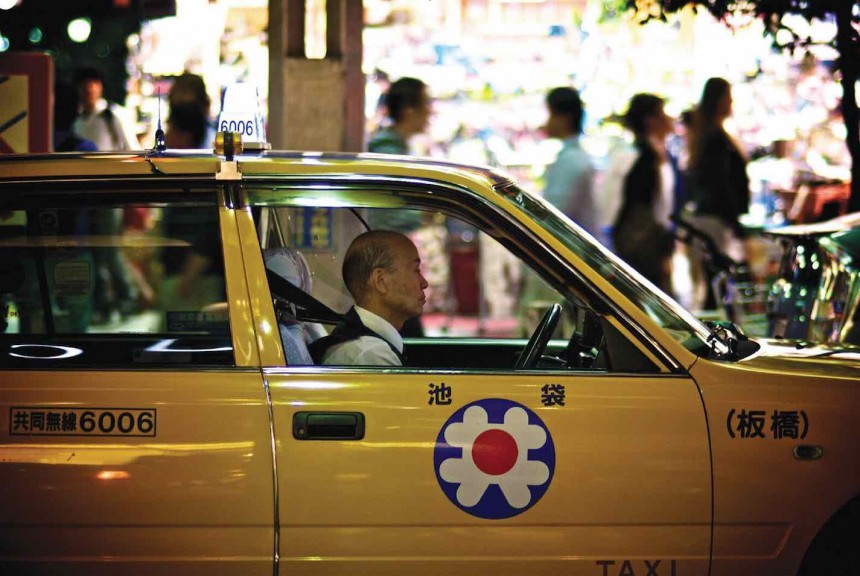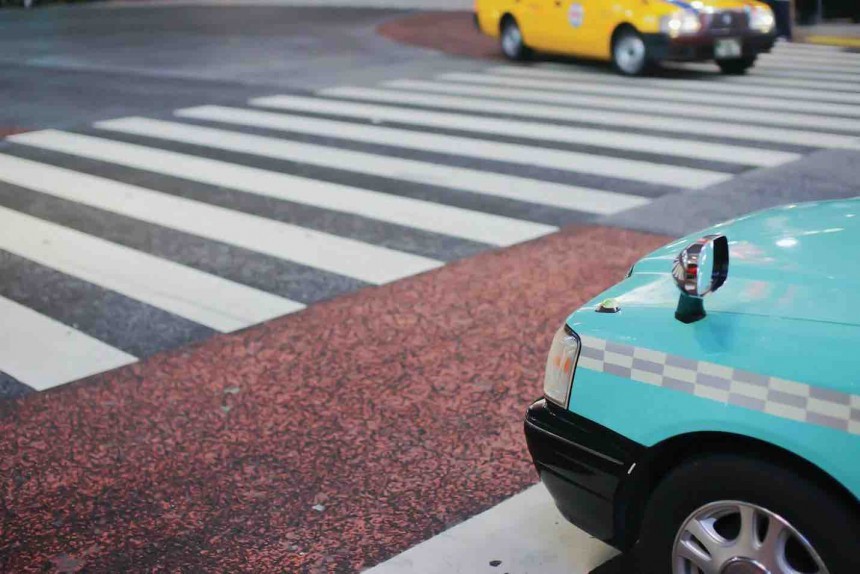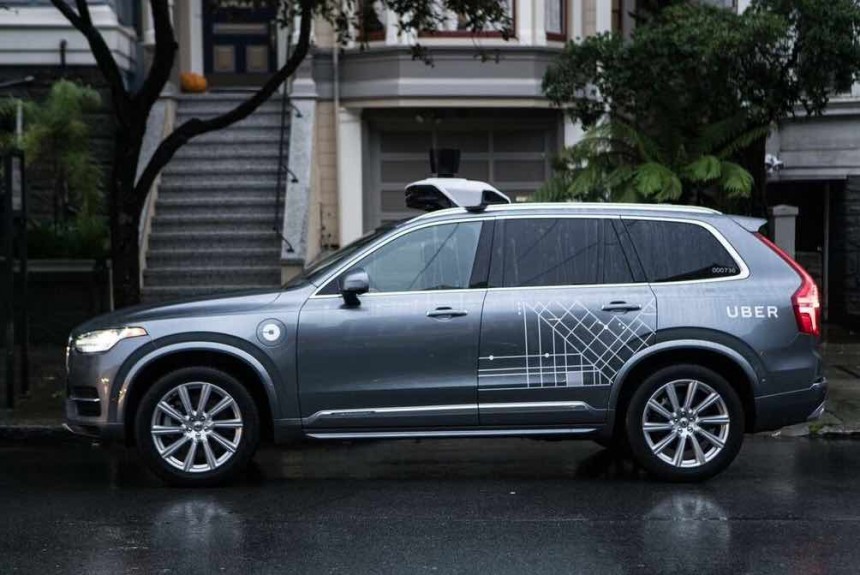
The boxy sedans of the Tokyo taxi industry may not have the iconic look of a yellow cab, but they’re just as ubiquitous. With lace-covered cushions, near savant-level spatial memory and undeserved courteousness, Tokyo taxi drivers transported over 850,000 passengers per day in 2017, according to the Tokyo Hire-Taxi Association. These numbers pale in comparison to train and subway passengers, but it’s hard to ignore that taxi cabs are ingrained in the city’s culture and transportation infrastructure. Late at night, it’s not uncommon for stretches of the city’s major thoroughfares to be filled exclusively by cabs. After the last train, it falls on these drivers to pick up the pieces — salarymen on their last fumes of Boss-branded caffeine, izakaya-goers red in the face from nihonshu, or rowdy tourists leaving Roppongi clubs — and put the city back together.

In the heart of Tokyo, the ability to hail a taxi at almost any moment is a luxury rarely replicated elsewhere. The 23 wards currently comprise the largest taxi market in the world. But in the face of major technological developments, including ride-sharing services and self-driving vehicles, this entrenched institution is facing new challenges to its business and appears to be on the brink of foundational change.
♦♦♦
Uber Technologies Inc.’s swift rise to Silicon Valley behemoth status (currently valued around $50 billion) has been marked repeatedly by clashes with local taxi companies. Uber’s ride-sharing service, where passengers connect via app with private drivers, is a business model that often usurps existing corporate taxis. New York City, Madrid, Bogota and London have all seen protests against the service from local taxi drivers who watched ride-sharing apps swallow their market share. But this familiar narrative has not played out in Tokyo, where Uber currently takes in less than one percent of monthly rides.

Tetsuyuki Yoshida is a full-time taxi driver for the Shinagawa Kotsu Corporation. Two years into the job, he’s pursuing professional mixed martial fighting and teaching on the side. It’s been four years since Uber Japan’s launch, yet Yoshida has little comment on the company’s presence in Tokyo. When asked how the app has impacted his job, Yoshida responds, “for the moment, I don’t feel its influence.” Is the largest taxi market in the world, the demand is certainly there. What makes Tokyo different?
Last November, Masami Takahashi left his position as President of Uber Japan. His tenure was met with several roadblocks to growth. For one, Uber’s success in the U.S. and other major markets has, in large part, been predicated on weaknesses in existing transportation infrastructure. Uber offers an easy alternative to poorly-operated train and bus lines and a cheaper alternative to cabs. If you want to see the blueprint for Uber’s ppopularity in New York, look no further than the MTA. Amid Tokyo’s unmatched and expansive rail network, however, it’s difficult to see Uber as a convenient alternative. The standard is already so convenient. But as Brooks Entwistle, Uber’s Chief Business Officer for Asia Pacific, points out, “We operate in more than 600 cities and 78 countries in the world … where they have sophisticated public transportation systems.” In short, trains aren’t the only problem.
If there’s one silver bullet responsible for Uber’s setbacks in Tokyo, it’s government regulation. In 2015, Takahashi operated a pilot ride-sharing program in Fukuoka to get Uber’s foot in the door of Japan. Like most versions of the service, Uber’s app connected Fukuoka residents with local car drivers to transport them to local supermarkets and around town. Soon after the launch, the program was deemed illegal by the national transportation ministry. Japanese law requires a license to commercially transport passengers. Despite Uber’s attempt to slip through the cracks with casual, part-time drivers, the government held firm on the rule.

Beyond protecting existing taxi companies, these regulations were meant to protect drivers themselves. Since Uber usually does not consider its drivers employees, those drivers don’t receive employee benefits and are personally liable for all traffic accidents. As a driver, Yoshida is thankful for Japan’s road transportation regulations. “Taxi drivers must give their lives, safety and time,” he says. “Regulating taxis so that only drivers with these types of licenses can pick up and transfer customers, I think is good for the customer.”
But in practice, this regulation has changed the nature of Uber’s business. Customers familiar with the company abroad may find themselves hit with unexpected upsurge prices in Tokyo (“a ¥10,000 Uber ride?!”), or face-to-face with a standard taxi after calling a car. That’s because Uber’s transportation app functions closer to a taxi-hailing service here. Instead of unlicensed Uber drivers, the app connects you with premium private drivers (basically town cars) and taxi companies themselves. Uber launched a partnership with nearly all the major taxi companies, taking a small cut for routing customers to taxi company drivers via their Uber app. While across the world Uber and taxi companies have butt heads, in Tokyo they’ve actually entered a partnership. Alongside apps like Zenkoku Taxi (operated by Japanese taxi companies), the service is connecting more passegners with licensed taxi comapnies and bringing the industry into the digital age.
If current transportation regulations stays in place, however, Uber has little chance of expanding beyond this reduced service and into ride-sharing programs. Instead, they’ve devoted some of their spare time to successfully launching the UberEATS food delivery service in Japan. “Our focus is on widening our partnership with taxi companies in Japan. Current regulations don’t permit ride-sharing,” says Entwistle. “Our taxi partnerships are good for regulators, showing we are partners with them in a shared goal of getting cities moving better.” While the company maintains they are hunkering down into the taxi-hailing business, it would take little more than a change in the Road Transportation Act to open up Tokyo to all of Uber’s technology, and threaten the taxi industries hold on the market. And, as Entwistle says, “We believe the market is at a turning point with the upcoming 2020 Tokyo Olympics.”
♦♦♦
For many in the taxi industry, 2020 is an important benchmark. Yoshida says expectations are high, as record numbers of tourists continue to flood through immigration in the lead-up to the games. While it’s unclear if changes in existing license regulation will accompany this rise in demand, there is already one major shift in the works. Tokyo taxi company Hinomaru Kotsu has partnered with ZMP Inc., a Japanese robotics company specializing in autonomous vehicles. Together they’ve pledged to have 600 driverless cars on the roads of Tokyo by 2020. The technology combines radar, image and ultrasonci sensors on vehicles to map roadways in real time. While the thought of Tokyo taxis without drivers or steering wheels may sound like a distant pipedream, in reality, it could be operational within two years.

Uber and self-driving taxi initiatives are not entirely unrelated. Alongside Google and other Silicon Valley heavyweights, Uber Technologies has been investing in self-driving technology with hopes to operate its own fleet of driverless cars. In 2015, Uber poached a team of professors and scientists from Carnegie Mellon’s well-respected robotics lab to bring self-driving Ubers to life. “Self-driving is incredibly important to our mission of bringing reliable transport to everyone, everywhere, and as a company we are investing in it,” said Entwistle. “The technology has the potential to reduce accidents, free up space dedicated to parking and cut congestion, making cities more livable.” Not to mention, the ability to resolve complicated regulatory issues around driver employment. The possibilities for Uber in self-driving cars are extensive and a pilot is already operational in Pittsburgh, USA. Uber currently has no plans to bring driverless vehicles to Japan, but Tokyo is filled with demand. Time will tell if they can outpace local driverless taxis operations.

While Yoshida has yet to feel Uber’s presence in his day-to-day work, the future of driverless cars has made more of a mark. He’s confident the technology is a part of the city’s future and expects an impact on his work, “There are crew members who are worried that sales will go down,” he said. Losing a job to automation is an upsetting reality of today’s digital age, and it appears taxi drivers may not be immune. As unpiloted cars take to the streets of Tokyo, they could divert business from man-operated taxis. Or residents may buy their own self-driving cars–chauffeured around the city by a computer chip rather than a person.
If there’s anything that stands out about the Tokyo taxi industry, it is the customer experience. On first encounter, the novelty of an automatic door is, admittedly, wholly unnecessary. But if you think about it a second longer, you realize the door is there to make the passenger experience as convenient as possible, from the moment you step in to the moment you step out. That attention to detail is a signature of Tokyo’s taxi drivers. It’s there when the taxi driver runs around to help you with your bags, or when they express an overbearing concern about you forgetting your belongings, and it’s there during the occasional run-in with the taxi old guard, wearing their tailored vests and crisp white gloves.
“Some passengers are sick or in a hurry to the hospital, some have failed business negotiations. Some are very private, some are very depressed, and some are irritated,” says Yoshida. “The driver listens gently to such stories, and some people have told us that their feelings were easier to process when they got out of the taxi than when they got in.” In the hotbed of conversations about robotics, as futurists and Luddites run into battle, many contend there are things that a robot will never be able to do. Yoshida shares the sentiment. “We believe that customer service with a full heart is the strength of a manned taxi.”





